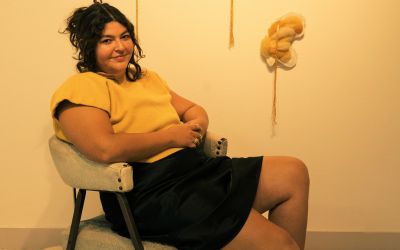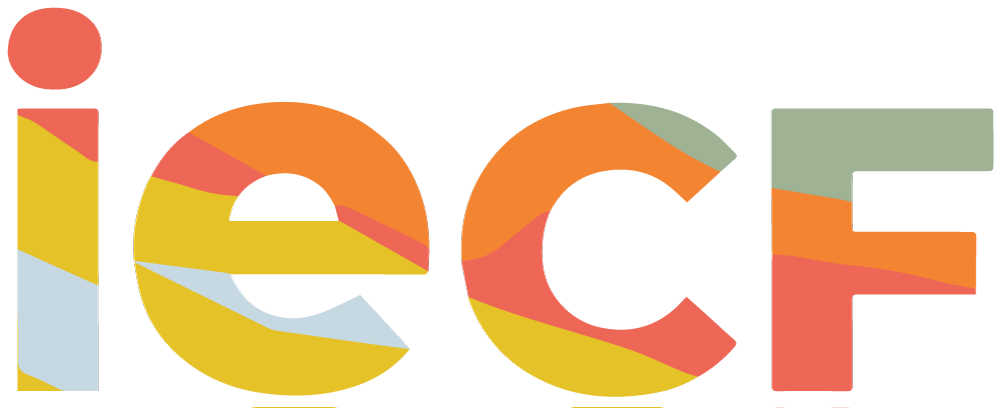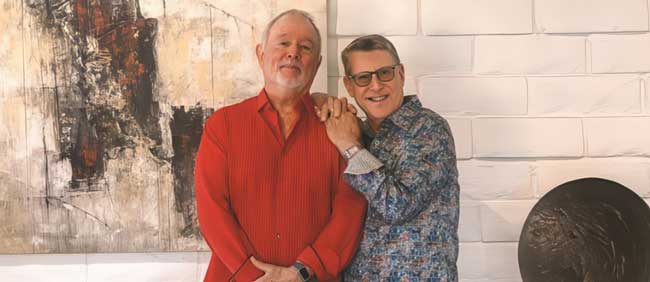 In an era wrought with divisiveness, it’s downright refreshing to come across an artist whose dedication to the craft and ability to provoke thought simply cannot go unnoticed. Meet Adriana Lopez-Ospina, a passionate Indio-based artist whose large-scale, wool-fiber artwork has been capturing attention.
In an era wrought with divisiveness, it’s downright refreshing to come across an artist whose dedication to the craft and ability to provoke thought simply cannot go unnoticed. Meet Adriana Lopez-Ospina, a passionate Indio-based artist whose large-scale, wool-fiber artwork has been capturing attention.
These expertly woven pieces are as dramatic as they are thought-provoking, allowing the viewer to consider a perception of flow and movement, but also the meaning of the blend of white with dark yellow tones. These pieces are among many other striking works from the Colombian-American mixed-media artist.
And all of it has been fueled by a deeper desire to remain connected to her roots.
“Most of my work is centered around research in the indigenous cultures of Colombia because both my parents immigrated here, and I’m a first-generation American,” Lopez-Ospina says. “When I graduated school, I was disconnected from my culture and when I started practicing my art, I didn’t know what I wanted to do. But I knew I wanted to reconnect with my history and heritage a lot more.”
 She began reviewing the visual language present in Columbia, much of which originates from indigenous cultures. Her process of naturally dyeing and weaving works into large-scale installations is unique.
She began reviewing the visual language present in Columbia, much of which originates from indigenous cultures. Her process of naturally dyeing and weaving works into large-scale installations is unique.
“My wool work right now is actually inspired by the Wayuu Tribe, which is in the desert region of Colombia,” she shares. “They’re famous for making mochilas, which are hand-woven bags or backpacks. I looked at their use of color and pattern, along with their fiber work and how that is used as a form of communication, and how prevalent that is in Colombian aesthetics.”
To that end, her future works are bound to draw even more interest.
Recently, Lopez-Ospina received a Creative Corps Inland SoCal Grant through the Inland Empire Community Foundation. The resources will fuel a compelling new art endeavor called “Texts and Textiles.” The project begins with a series of workshops that will culminate in an exhibition showcasing artwork and writings specially created by Eastern Coachella Valley locals.
“The focus of the installation is public health and environmental issues that are caused by the Salton Sea,” explains Lopez-Ospina, who recently achieved her master’s in healthcare administration after working in the healthcare field for some time.
 “I was drawn to both public health and environmental issues because of our proximity to the Salton Sea,” she says. “We talk so much about the social determinants of health, which is all the aspects outside of what we directly think about health care—maybe just seeing your doctor and taking medications to manage symptoms—but it’s more your environment, your access to actually getting healthcare, your economic status, and your education. All that affects your health.”
“I was drawn to both public health and environmental issues because of our proximity to the Salton Sea,” she says. “We talk so much about the social determinants of health, which is all the aspects outside of what we directly think about health care—maybe just seeing your doctor and taking medications to manage symptoms—but it’s more your environment, your access to actually getting healthcare, your economic status, and your education. All that affects your health.”
With the environment being a key component, the artist set her sights on the Salton Sea, which continues to dry out.
“All of the exposed parts of the Salton Sea are deposits of salt and agricultural runoff that gets kicked up into the air as the area’s intense wind tunnel essentially pushes it out into our communities,” she says. “I’ve always been aware of that as a local. We all hear about it, and even experience it in summer, especially with intense smells on the hottest days of the year.”
To that end, she intends to create new art with the senior communities of Mecca, Thermal, and North Shore. The large-scale, wool fiber art will be on exhibit at the Salt Lake City Yacht Club for nearly five months, beginning in February 2024. But there’s a noteworthy twist with the exhibition.
“The wool will slowly pick up all of the toxins—the salt deposits and the agricultural runoff—just by being in proximity to the Salton Sea,” the artist shares. “I did an experiment with the white wool I usually use, and it turned dark brown/yellow, which is a representation of how our lungs are affected by certain environmental elements.
“Because Coachella Valley, especially Eastern Coachella Valley, has respiratory issues that are three to five times higher than the national average, I wanted the community to be aware of that as art projects are proposed,” she adds. “It’s a way for us to maintain and bring that environment back to life.”
Lopez-Ospina’s work expands beyond the wool creations. She has been prolific in striking gold leaf creations, for instance, which culminated in a series titled “All that Glitters is Fools Gold.” And any glance at her street art invites deeper exploration. Recent Indio and Palm Desert street art captured dynamic free-flowing patterns and compelling outlines of a body.
Working under her Pura Projects label, the artist is thoroughly invested in heading into the mid-2020s with vigor.
“We live in a unique locale because there’s not a lot of desert environments and climate like this,” she notes of how the area inspires her to create. “But we also have an interesting social component where things can be very quiet here and people have more time to reflect. When I talk to other artists here, we talk about being able to focus on what you want to work on.
‘I love that because there’s something about how still the desert is that allows for so much reflection,” she adds. “And that’s beautiful.”
Learn more about Adriana Lopez-Ospina at puraprojects.com.
Visit IECF at iegives.org for more information.
This story originally appeared in the Desert Sun December 2023.
Learn more about the good work we’re doing at IECF through the power of philanthropy. Subscribe to our free monthly eNewsletter, Philanthropy Matters.


